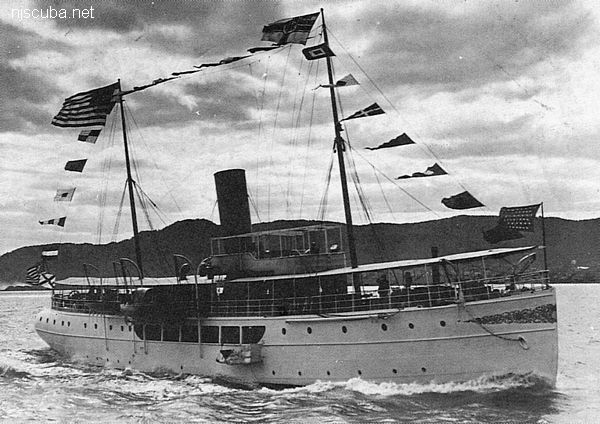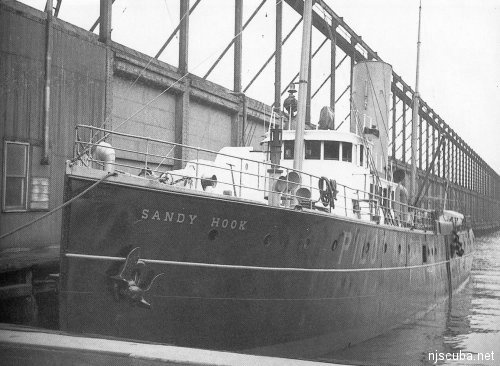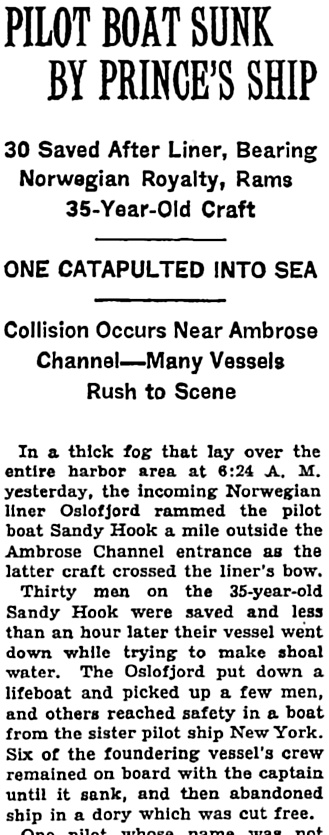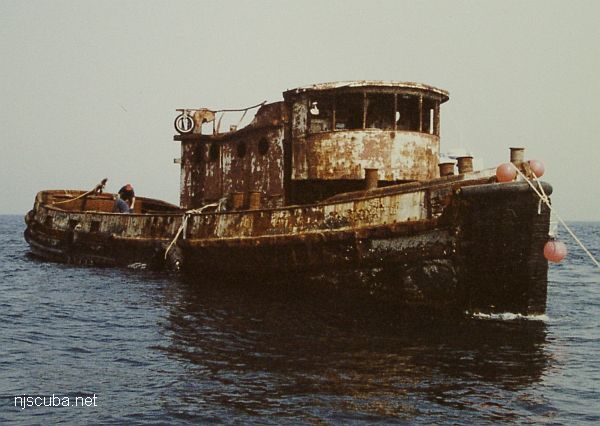Sandy Hook Pilot Boat

- Type:
- shipwreck, pilot boat, converted yacht, USA
- Built:
- 1902, Bethlehem Elizabethport, Elizabeth NJ USA, as Anstice, later Privateer
- Specs:
- ( 168 x 24 ft ) 361 gross tons, 26 crew & harbor pilots
- Sunk:
- Thursday April 27, 1939
collision with tanker Oslofjord ( 16500 tons) - no casualties - GPS:
- 40°27.556' -73°49.490' (AWOIS 1986)
- Depth:
- 100 ft

The drawing above pretty much sums it up. The bottom is extremely silty, and visibility is usually poor. Many small lobsters, but very few big ones. Lots of skates and ling on the day I went there, but little else in the way of fish otherwise.

Although I am told this is a great dive if you catch it on a rare clear day, I think this wreck is more interesting from a historical perspective than for the diving. In fact, I thought the surface interval was more interesting than the dive. The site is right at the convergence of all three shipping lanes with the main channel, and all day enormous container ships, tankers, cruise liners, and even the odd Navy vessel pass by. The view of New York and the surrounding areas is excellent.



Questions or Inquiries?
Just want to say Hello? Sign the .